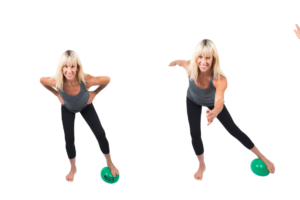By Melody Marler
Have you ever heard the phrase, Sitting is the new smoking? It seems a little hyperbolic, but really, how much time do you sit during your work day? And then later, when you’re relaxing with TV or social media, or engaging in a hobby? Sitting for a long time compresses the spine and causes imbalances in the rest of the body’s structure. This sedentary lifestyle creates a world of dysfunction, including back and neck pain. When you sit for an extended time without moving, your muscles shorten, causing weakness, stiffness, and the inability to move correctly.
The simple movements in the I Am Ageless Now book are a great way to help you start and stay active. Moving and stretching periodically throughout the day will help keep you limber too.
The Hidden Dangers of Sitting Too Much
The idea that “sitting is the new smoking” comes from studies that reveal how a sedentary lifestyle can lead to a variety of health issues, similar to how smoking did in the 20th century. Research shows that prolonged sitting is linked to an increased risk of conditions like obesity, type 2 diabetes, cardiovascular disease, and even early death. According to a study by the American Cancer Society, people who spend more than six hours a day sitting have a 19% higher risk of death compared to those who sit for fewer than three hours a day (source).
The human body is designed to move. Historically, our ancestors spent most of their time being active—hunting, gathering, farming, and exploring. Fast forward to the present day, and it’s easy to see how our modern conveniences have left many of us sitting for most of our waking hours. The average adult now spends over nine hours a day sitting, between work, commuting, and screen time at home.
The Consequences of Prolonged Sitting
So why is sitting so harmful? The problem lies not only in the inactivity itself but also in the negative changes it brings to our body’s structure and function:
- Compressed Spine and Back Pain: Sitting for long periods exerts pressure on the spine, causing compression and leading to chronic back pain. This happens particularly when your posture slouches, which can gradually become your natural position—especially if you’re hunched over a smartphone.
- Shortened and Weak Muscles: Sitting causes the hip flexors to shorten, leading to tightness in the hip area. As these muscles tighten, they become weaker over time, making everyday movements like standing up or walking more difficult.
- Poor Circulation and Metabolic Health: Prolonged sitting reduces circulation, especially in the legs, which can lead to swelling, varicose veins, or even dangerous blood clots. Being sedentary also negatively impacts your body’s ability to regulate blood sugar and blood pressure, which are key factors in heart health.
- Mental Health Impact: It’s not just your body that suffers. Studies have shown that too much sitting can affect your mental well-being. Lack of movement often contributes to feelings of fatigue and a decrease in mood-boosting endorphins. A study from the Journal of Behavioral Nutrition and Physical Activity found a link between prolonged sitting and an increased risk of anxiety and depression (source).
How to Combat the Negative Effects of Sitting
The good news is that the solution is relatively simple: move more! Making small, consistent efforts throughout the day can counteract the harm caused by prolonged sitting. Here are some practical strategies to get you started:
1. Take Frequent Breaks
Set a timer to remind yourself to stand up and move around every 30 minutes. Your movement can be as simple as taking a short walk around the office or even doing a few stretches at your desk. Keep a set of light hand weights nearby and use them to help you stretch periodically throughout your work day. Research from Harvard Medical School suggests even a 5-minute break every half hour can significantly improve physical and mental health (source).
2. Incorporate Standing Options
Standing desks have become popular for good reason. If you work at a desk, try alternating between sitting and standing throughout the day, if you have that option. Many workplaces are now encouraging standing meetings to not only break up long periods of sitting but also to keep discussions brief and focused.
3. Walk Whenever Possible
Consider simple changes like taking the stairs instead of the elevator, parking farther away from your destination, or using a lunch break to take a brisk walk. Walking meetings can also be a great way to combine movement with productivity.
4. Stretch and Strengthen
Incorporate stretching exercises that target the hips, lower back, and shoulders to counteract tightness caused by sitting. In addition to the I Am Ageless Now movements, Yoga or Pilates can be particularly effective in releasing tight muscles and improving posture. Adding in strength exercises for the core can also help support a healthy spine and improve your stability.
Small Changes, Big Impact
While the phrase “sitting is the new smoking” may seem a bit exaggerated at first glance, the truth is that our sedentary lifestyles can lead to numerous health complications. But unlike smoking, which often requires a complete lifestyle overhaul to quit, combating the negative effects of sitting is within reach for most of us. It’s about making movement a consistent and integrated part of our day-to-day lives.
Whether it’s setting reminders to stand, taking frequent walking breaks, or simply adjusting your posture more often, these small changes can make a world of difference. Sitting might be an inescapable part of modern life, but that doesn’t mean we have to be slaves to our chairs.
Start where you are!




